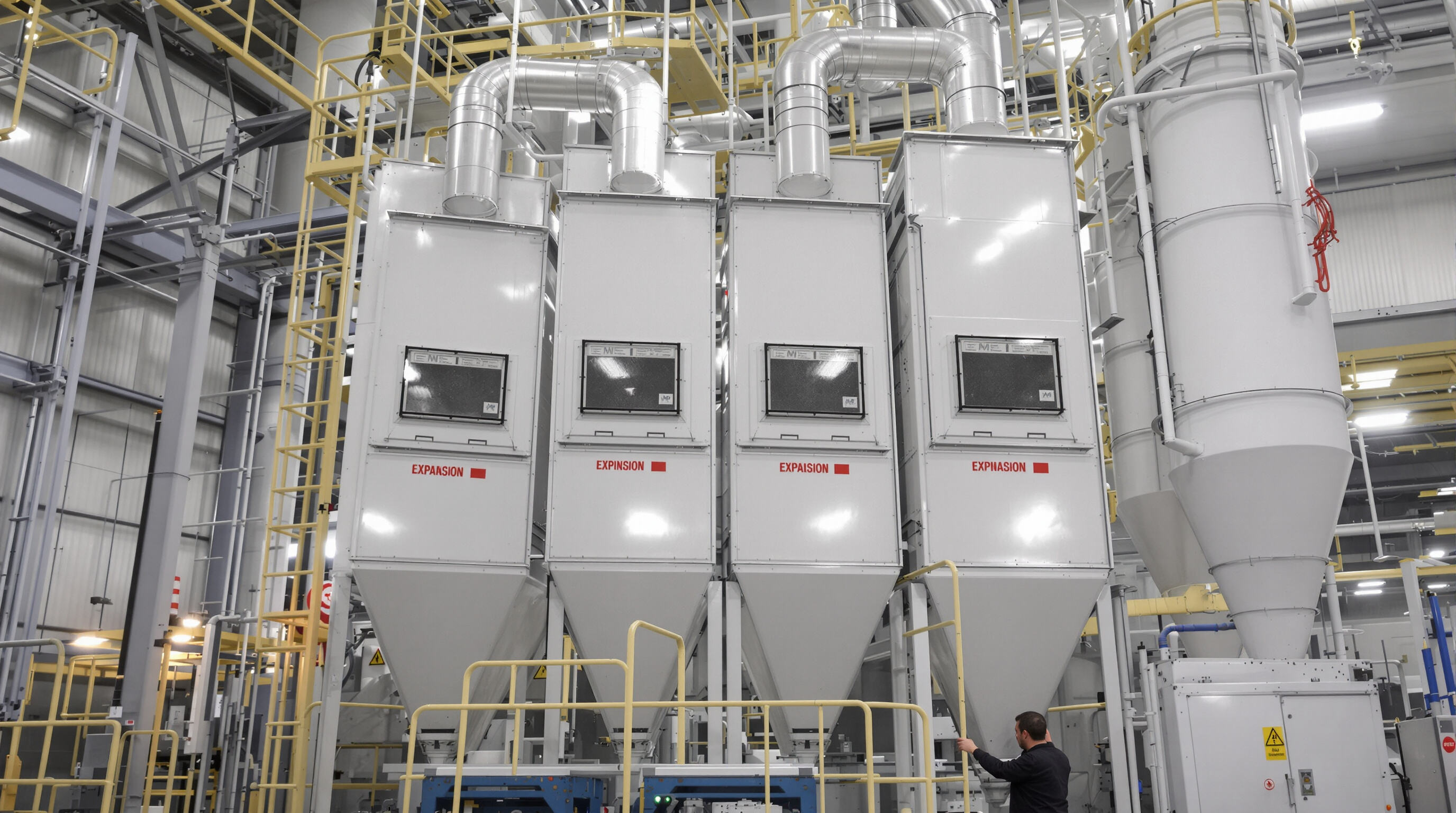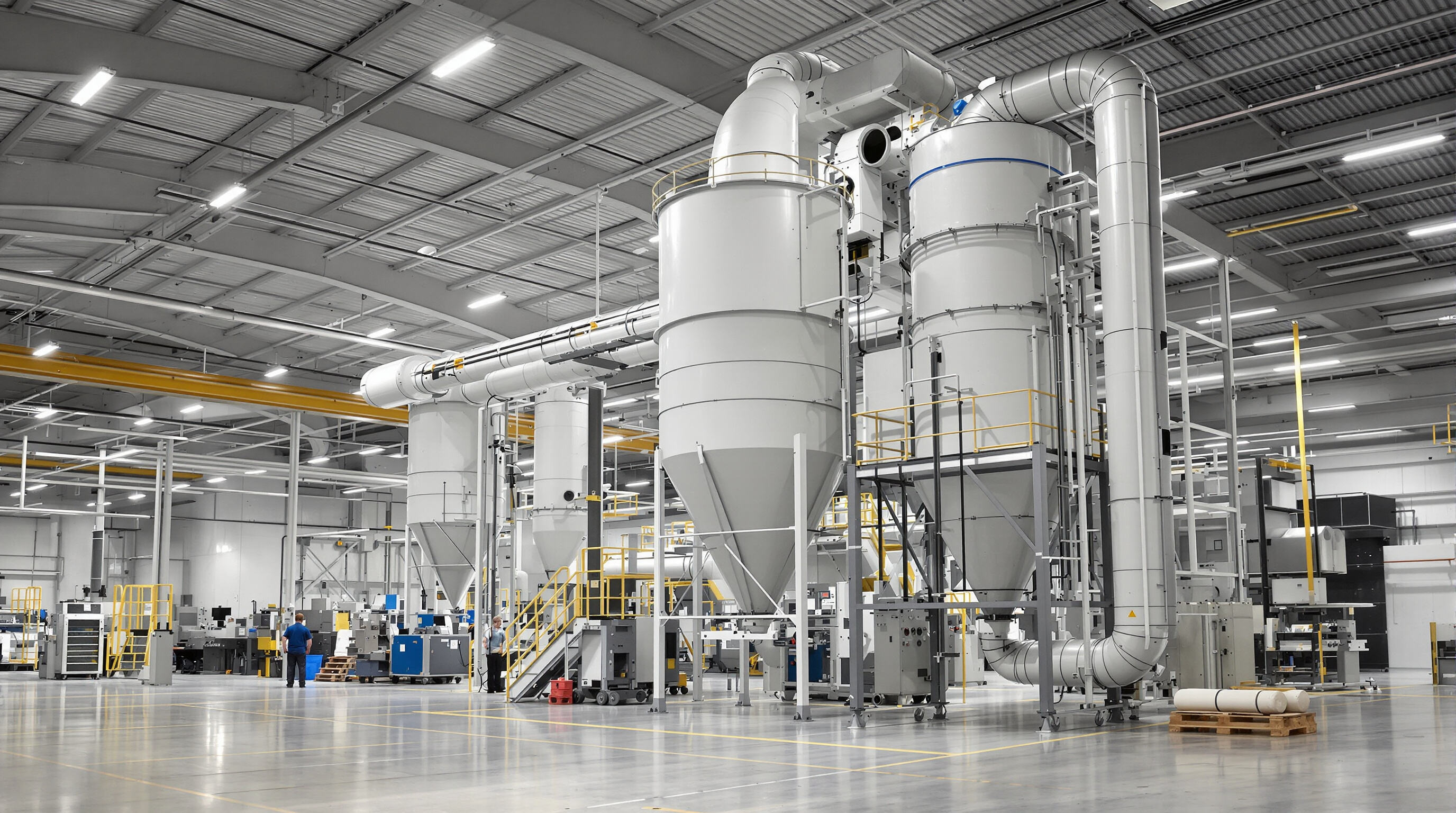Airborne industrial dust presents severe respiratory risks, including silicosis, asthma, and chronic obstructive pulmonary disease (COPD). Workers in industries like metal fabrication and pharmaceuticals face daily exposure to particles under 10 microns—small enough to bypass natural lung defenses.
Respirable crystalline silica, wood dust, and metal fumes account for 23% of OSHA’s 2024 workplace safety citations. These particles embed in lung tissue, increasing lifetime disability risks by 4x compared to non-exposed workers.
Advanced systems with HEPA filtration capture 99.97% of particles down to 0.3 microns. A 2024 Camfil APC study found facilities using compliant systems reduced respirable dust levels by 78% versus uncontrolled environments.
Manufacturers report 32% fewer sick days and 41% lower workers’ compensation costs post-installation. One Midwest auto parts plant eliminated silicosis cases entirely while reducing maintenance downtime by 27% over two years.
Dust collection systems play a vital role in staying compliant with those tough air quality regulations set by organizations like OSHA, EPA, and NFPA. Basically, these systems work to contain dangerous dust particles in the air so they don't go beyond what's considered safe for workers. Take NFPA 652 for instance. This standard actually demands that businesses do something called a Dust Hazard Analysis to spot potential problems and then put solutions in place. Sometimes that means installing things like explosion vents or suppression systems right into how the dust collectors are built. If companies ignore these requirements, guess what happens? OSHA might show up unannounced through their Combustible Dust National Emphasis Program. They tend to focus on places where dust is a real concern, think woodworking shops or even pharmaceutical manufacturing plants.
Businesses that don't follow proper dust control regulations can expect fines around $15k for each OSHA violation according to recent figures from 2023, plus possible shutdowns of operations. Getting an industrial dust collection system set up right helps avoid these problems because it meets both EPA emissions standards and what OSHA calls their General Duty Clause about keeping work environments safe from hazards. Systems built to NFPA 654 standards stop dust from building up in those hard to reach spots where inspectors often find issues when they come through for checks. Many companies have learned this the hard way after getting cited repeatedly for exactly these kinds of problems.
For companies working in areas such as chemical production or food processing plants, there's quite a bit of overlap between what NFPA 652 and GMP regulations demand when it comes to safety measures. Dust collection systems built for these risky settings typically include things like spark detectors, flame arrestor devices, and conductive filter materials so they can satisfy requirements from both sets of guidelines. Getting this kind of double standard coverage actually helps cut down on potential fires and keeps products clean and uncontaminated. This matters a lot especially for businesses under FDA oversight because getting contaminated products out into the market isn't just bad for business finances, it really damages company reputation too.
Key Compliance Features of Modern Systems
| Component | Function | Standard Alignment |
|---|---|---|
| Explosion vents | Release pressure safely during ignition | NFPA 68, OSHA 1910.307 |
| HEPA filters | Capture fine particulates | EPA PM2.5 guidelines |
| Conductivity testing | Prevent static-induced fires | NFPA 77, GMP protocols |
By integrating these features, facilities achieve consistent compliance while addressing evolving regulatory benchmarks like NFPA 660 (effective 2024), which consolidates combustible dust standards.

Dust explosions don't just happen out of nowhere. They actually go through what experts call the "dust explosion pentagon" model. Let's break it down real quick: we need fuel (those tiny airborne particles floating around), something to light them off (the ignition source), plenty of oxygen in the air, some kind of enclosed space where pressure can build up, and finally those particles have to be spread throughout the area. Factories working with stuff like aluminum powder (particles smaller than 420 microns) or wood flour (less than 100 microns) are really at risk here. A recent report from the Chemical Safety Board found that about half of all these accidents start with dust buildup thinner than 1/32 inch. That's basically the same as how thick a standard paperclip is when held sideways.
Modern Industrial Dust Collector systems integrate multiple safeguards:
NFPA 652-compliant units reduce explosion likelihood by 89% while maintaining <0.03 oz/ft³ residual dust—12x below the minimum explosive concentration (MEC) threshold for most materials.
A Midwest metal fabricator avoided catastrophe when their collector’s integrated vent panel safely redirected a 12psi deflagration caused by aluminum polishing dust. Post-incident analysis showed the system:
| Metric | Performance | Industry Average |
|---|---|---|
| Pressure containment | 95% | 70% |
| Downtime after incident | 0 hours | 48+ hours |
| Cleanup costs | $2,800 | $740k (Ponemon 2023) |
This real-world example underscores why 92% of facilities upgrading to advanced dust collection systems report eliminating Class II Division 2 fire hazards entirely (NFPA 2023).

Dust collectors in industrial settings stop the accumulation of abrasive particles on machine parts, something that really wears down manufacturing equipment over time. These systems can catch around 95 percent of airborne dust before it lands on sensitive components, which means less friction building up inside motors, bearings, and throughout production lines. Plants that have installed industrial dust collection systems report seeing about 19 percent fewer unexpected shutdowns for maintenance work, plus their machines tend to last longer since there's roughly 30 percent less wear overall compared to facilities without such systems according to Motion Drives research from 2025. For manufacturers looking at long term costs, this makes a big difference in both downtime and replacement expenses.
Controlled dust levels eliminate frequent cleaning cycles and quality-control disruptions caused by particulate contamination. Employees in facilities with industrial dust collectors report 27% fewer workflow interruptions according to operational studies, while energy-efficient models reduce annual HVAC filter replacement costs by $4.2k—$6.8k per production line.
Third-party analysis of 47 manufacturing plants revealed direct correlations between dust collector implementation and operational savings:
| Metric | Improvement | Annual Cost Impact |
|---|---|---|
| Machine downtime | -22% | $18k savings per line |
| Component replacements | -30% | $9k savings per line |
| Energy consumption | -14% | $5k savings per line |
These outcomes align with broader findings that optimized total cost of ownership strategies in industrial settings reduce long-term capital expenditures by 18—34% over 5-year periods. Modern modular designs further enable scalability, allowing facilities to adapt systems as production needs evolve without full-system overhauls.
The financial benefits of industrial dust collectors come from several angles including staying compliant with regulations, running operations more efficiently, and cutting down on health risks. Plants that keep their air quality up to standard typically sidestep those hefty OSHA fines which can run around $15k each time there's a violation. Plus they dodge the EPA cleanup bills that often top $50k a year when things go wrong. The equipment itself lasts longer too since dust buildup wears it out faster. Maintenance departments report about 30% less spending on repairs after installing proper dust collection systems. And let's not forget about employee well being. According to studies from NIOSH, workplaces see roughly 19% drop in worker comp claims once these systems are in place. People just don't call in sick as much either – absenteeism drops by about 27%. All this adds up to real money saved while keeping everyone safer and healthier at work.
When comparing industrial dust collector technologies, energy-efficient models demonstrate clear economic advantages despite higher initial costs. Consider these operational differences:
| Cost Factor | Traditional Systems | Energy-Efficient Models | Savings Potential |
|---|---|---|---|
| Annual Energy Consumption | $15,000—$85,000 | $8,000—$45,000 | 40—47% |
| Filter Replacement Cycles | Quarterly | Biannual | 50% reduction |
| System Lifespan | 7—10 years | 15+ years | 50% extension |
Variable-frequency drives and aerodynamic enhancements in modern units reduce power demand during partial-load operations, while improved filter media extends service intervals. These efficiencies typically yield full ROI within 18—36 months.
Smart manufacturing plants these days are increasingly turning to modular dust collection systems that can handle changes in production volume and support business expansion. The segmented design of these systems means companies can upgrade their capacity bit by bit instead of replacing everything at once, something really important for businesses expecting around 20 to maybe even 30 percent growth in output over time. When shopping around, check if the components follow standard specifications so they work together across different units. Also worth considering are systems that let new technologies get added gradually as needed. This kind of flexible setup helps protect investment money while still meeting those ever tightening environmental regulations down the road. Studies on long term costs suggest businesses could save about a third of expenses compared to traditional fixed capacity models if they plan ahead for more than five years into the future.
Airborne industrial dust can cause serious health issues such as silicosis, asthma, and chronic obstructive pulmonary disease (COPD).
Industrial dust collectors use HEPA filtration to capture up to 99.97% of particles as small as 0.3 microns, significantly reducing airborne dust levels.
Dust collectors need to comply with regulations from organizations like OSHA, EPA, and NFPA, which include air quality and combustible dust control standards.
Modern dust collector systems integrate safety features like spark detection, explosion venting, and deflagration isolation to minimize explosion risks.
The ROI comes from compliance, efficiency, and health risk reduction, with savings on fines, cleanup costs, and maintenance expenditures.
 Hot News
Hot News2025-01-17
2025-01-13
2025-01-08
2024-12-27
2024-12-23
2024-12-16